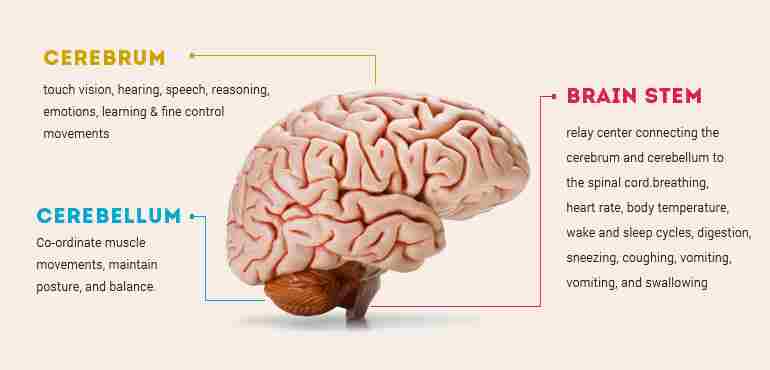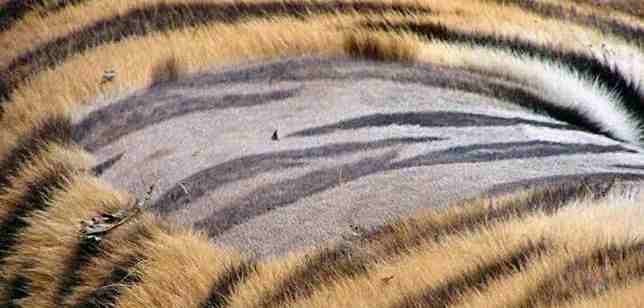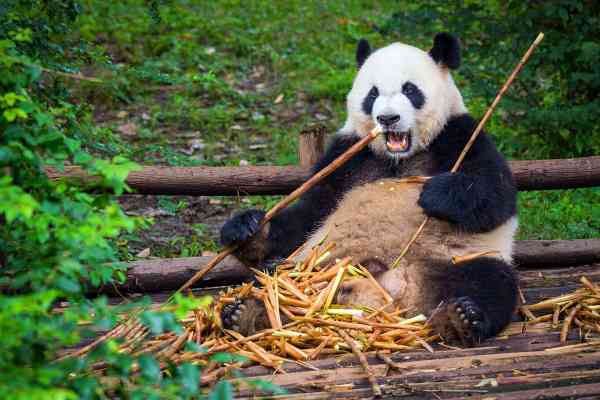 Alfred Ajibola
- Fri, 03rd January, 2020 @ 3:31 PM
Alfred Ajibola
- Fri, 03rd January, 2020 @ 3:31 PM
Topics in Basic Science
What is science? Qualities of a scientist Resources from living things Resources from animals Importance of immunization Types of Carbohydrates: Monosaccharides and Polysaccharides Carbohydrates: Disaccharides and Oligosaccharides Len Academy Examination Questions for Basic Science, JSS2, 2nd Term Len Academy Examination Questions for Basic Science, JSS3, 3rd Term Len Academy Examination Questions for Basic Science, JSS3, 2nd Term Primates: Characteristics of Primates Effects of improper waste management Waste Management: Causes of waste in the society Concept of mass and weight Mineral Salts: Sources, functions and deficiencies of macronutrients Sources, functions and deficiencies of micronutrients Len Academy questions for Basic Science JSS1 Len Academy mid-term test questions for Basic Science JSS1, 2nd Term Microorganisms causing food, water and air borne diseases Vector borne organisms and the diseases they cause Bones of the Human SkeletonAcademic Questions in Basic Science
Which of the following diseases is associated with river blindness?
A. Anthrax
B. Lawnmower Disease
C. Onchocerciasis
D. Devil's Crunch
E. Trypanosomiasis
F. Tularemia
The vector for yellow fever is _____.
A. Aedes Mosquito
B. Female Anopheles Mosquito
C. Plasmodium
D. Flavivirus
E. Black Fly
F. Bacillus Anthracis
The bones of the head and face make up the skull. These bones are _____ in number.
A. 12
B. 14
C. 16
D. 18
E. 20
F. 22
Bacteria are not a constituent of our environment.
A. True
B. False
Below are types of drugs. Which of these is considered as pain killers?
A. Stimulants
B. Depressants
C. Opiods and Morphine Derivatives
D. Hallucinogens
E. Anabolic Steroids
F. Cannabinoids
Which of the following statement is false concerning drugs?
A. Drugs can be inhaled
B. Drugs can be injected directly into the bloodstream
C. Drugs can be eaten
D. Drugs exist exclusively in the forms of tablets and syrups
E. Drugs can be placed under the tongue
F. Drugs can be taken with water or another liquid
Vaccination involves a process of introducing pathogens or germs into a person in order to prevent such person from the diseases they cause.
A. True
B. False
With regards to the human health, foreign bodies are best regarded as _____.
A. International bodies
B. Antilators
C. Antibodies
D. Antigens
E. Antibiotics
F. Antidotes
An animal is considered to be a primate if it belongs to an order called primate. The term 'order' refers to one on the levels of classifying living organisms.
The classification of living organisms are basically put into 7 levels. These are:
Kingdom
Phylum (for animals) or Division (for plants)
Class
Order
Family
Genus
Specie
Primates generally have two suborders. These are:
Prosimian: They include primates like lemur, tarsiers and lorises. They are shown in the image below:

Anthropoids: These primates include monkeys, apes and man. See the image below:

Primates are the 3rd most diverse order among mammals; after the orders: rodentia (comprising of rodents) and chiroptera (comprising of bats).
Please read an introduction to biology here.
All primates do not exactly share the same characteristics and this has brought about some divisions among zoologist as to the proper classification of primates.
You can read on the characteristics of reptiles here.
They have their eyes in front on their head; (that is; forward facing eyes). They also possess binocular vision, stereoscopic vision and colour vision.
They have flexible shoulder and hip joint. This feature gives primate the ability to carry out climbing movements.
Please read on the functions of the human skeleton here.
They have prehensile hands and feet with opposable thumbs and toes. This feature is responsible for gripping and manipulative actions in primates.
You can read on the basic characteristics of life here.
They have 5 digits on their hands and feet. This is termed 'pentadactyl'.
The image below shows the hands of various primates. Monkeys are exceptions here.

They have four different sets of teeth. These are incissors, canine, molars and premolars. They also have a decreased number of teeth when compared to other mammals.
They observe a longer postnatal cycle. This means that they spend a longer time caring for their young.
Please read amazing facts in biology here.
They have finger and toe nails, unlike other animals with claws and hooves.
They possess two clavicles (or collar bones) which connects the upper limbs to the manubrium of the sternum.
Please read on all bones of the human skeleton here.
They have the ability to stand and walk on two legs. This is termed bipedalism.
They live longer. This implies that they have longer life span when compared to other mammals in a different order. Chimpanzee for instance can live for up to 70 years while baboons can stay alive for up to 30 years (with proper medical care).
They exhibit an increased social behaviour and can gather in large groups.
Please read on the factors that promote cooperation here.
They have bigger brains with more folds. The more folds a brain has, the more intelligent the animal would be. In fact, the brains of humans are highly folded, giving rise to man's uniqueness.
Please read more on the uniqueness of man here.
Below is an image of the human brain:

The possession of a highly developed brain is the major attribute of man's uniqueness. This has enable man to reason, solve problems and advance in technology.
Kindly share this article via the links below:

Please click here to contact Alfred if you require any of the following services:
If you need a standard website at an affordable price.
Online training on the academic subjects: biology, chemistry and basic science.
If you require an advanced smart school management system (web application) for your school.
Click here to read on Len Academy Smart School Software.
Please click here to follow Len Academy on Google News.
Amazing facts in Basic Science
According to scientific research, if the first tear drop comes from the right eye, it’s tears of joy. If it comes from the left eye, then it is as a result of pain
Dentistry is the oldest profession in the world. This is considered true because a research conducted by the University of Bologna, Italy on a 14,000-year-old skull found that one rotten tooth in the jaw had been deliberately scoured and scraped with a dental tool
Scientific research has it that the human nose can distinguish more than a trillion different odors

Tigers have striped fur. So also is their skin

The most common wild bird in the world is native to Africa, and it's the red-billed quelea with a population estimated to be around 1.5 billion
Of all animals, mosquitoes hold the record of killing most humans annually. They are responsible for the deaths of 725,000 - 1,000,000 persons yearly
Antibiotics fights and kills bacteria. However, they do nothing to a virus
All insects have six legs. However, dragonfly has six legs but can't walk
The chin is defined as the protruding part of the face below the mouth, formed by the apex of the lower lip. It is shown below:

Interestingly, humans are the only animals with chin

Ripe cranberries will bounce like a ball. For this reason, they are nicknamed 'bounceberries'. They will also float in water
Notable points in Basic Science
We have six classes of food. These are:
Carbohydrates
Proteins
Fats and Oils
Vitamins
Mineral Salts
Water
In humans, roughages are not classified as one of the classes of food. This is so because they aren't digested. Instead, roughages facilitate the movement of bowels in the large intestine (colon); and for this reason, they can become useful in treating constipation.
Food refers to anything that is ingested by living organisms, giving them nutrients and thus enabling them to stay alive.
As an instance, 99% of a panda's diet is bamboo. In this case, bamboo is considered as food to a panda since it provides a source of nutrient and keeps it alive. This is shown in the image below:

The only process in nature that actively enriches our atmosphere with oxygen is photosynthesis. Every other process like respiration, burning and combustion takes away oxygen from it. In addition, they introduce carbon(IV)oxide (CO2) into the atmosphere.
Photosynthesis is also the only process that takes away carbon(IV)oxide (CO2) from the atmosphere.
Photosynthesis is defined as a process by which green plants manufacture food by utilizing carbon(IV)oxide and water in the presence of sunlight.
Oxygen is given off as a by-product of photosynthesis. In regards to this, it is recommended that each person plants a tree.
Matter is composed of particles which can be:
Tightly packed together (as seen in solids).
Loosely packed together (as seen in liquids).
Completely separated (as seen in gases).
The movement of the particles of matter is a function of the overall kinetic energy present in them. You can think of kinetic energy as energy in motion.
An increase in the particles' vibrational, rotational or translational motion will imply an increase in temperature while a decrease in the particles motion (vibrational, rotational and translational) will mean a decrease in temperature. Based on this knowledge, we can therefore define temperature as the measure of the average kinetic energy possessed by the particles of matter.
Intelligence Quotient (IQ) is a score derived from a set of standardized tests developed to measure a person's cognitive abilities in relation to their age group.
IQ may also be defined as the ratio of mental age (MA) to chronological age (CA) multiplied by 100.
Below are some formulas pertaining Intelligence Quotient:
IQ = MA x 100 ÷ CA
MA = Mental age
CA = Chronological age
IQ above 100 = Brilliance
IQ that equals 100 = Average
IQ below 100 = Below Average